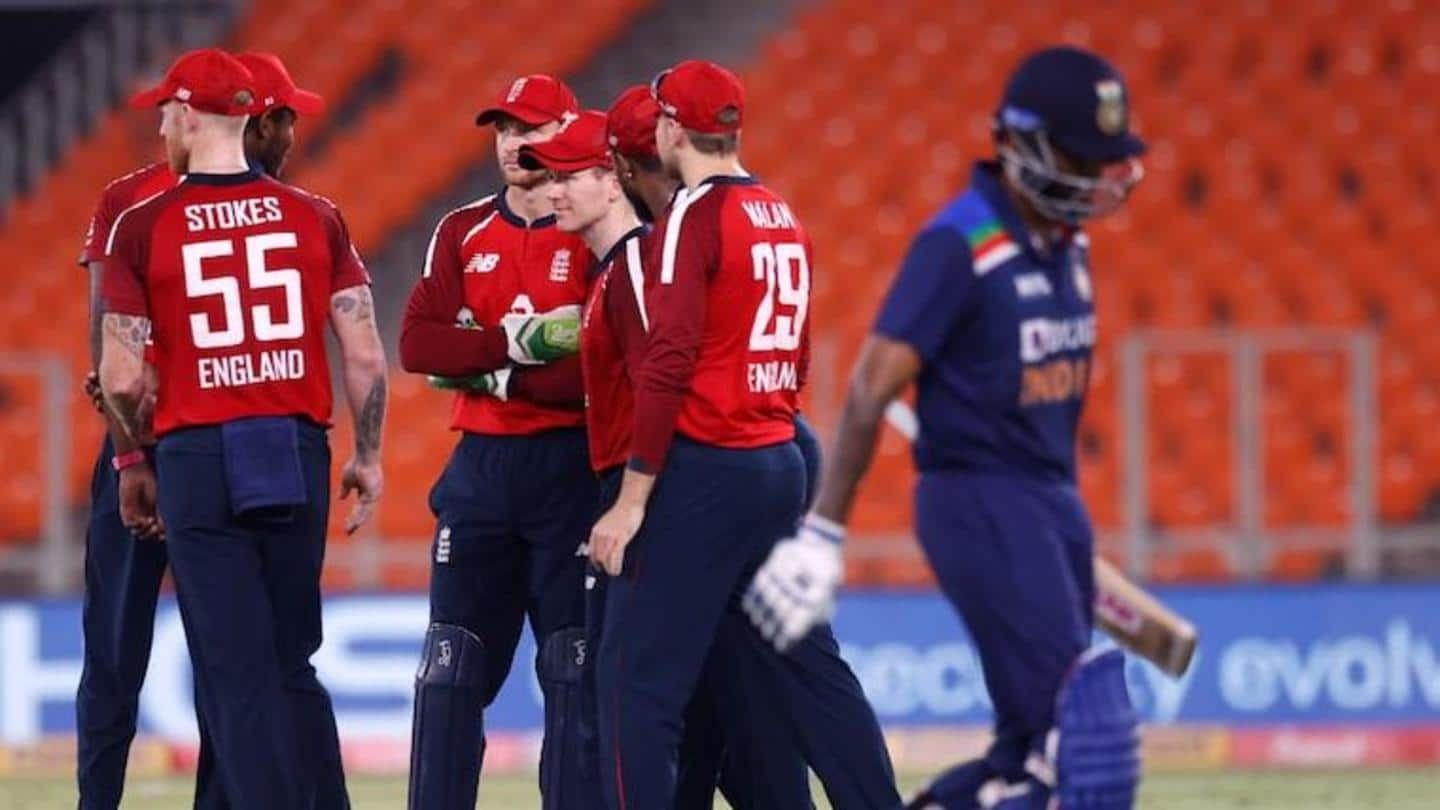
#NewsBytesExplainer: All you need to know about 'soft signal' rule
What's the story
India made a stunning comeback in the five-match T20I series by winning the fourth match.
They claimed an eight-run victory in an attempt to defend 186 runs.
Top-order batsman Suryakumar Yadav headlined the match, having smashed a blistering 57 (31).
However, some unusual dismissals sparked a debate on the bizarre rule of "soft signal".
Let us try to decode the same.
Dismissals
4th T20I: Suryakumar, Washington suffered due to this rule
In the match, Suryakumar was caught by Dawid Malan. However, replays showed that the ball certainly touched the ground.
Despite referring to third umpire, the on-field umpire initially gave soft signal as out.
Due to inconclusive evidence, the decision couldn't be overturned.
Similarly, Washington Sundar was given out even though Adil Rashid's foot appeared to have touched the boundary-rope while taking the catch.
Inception
What is the 'soft signal' rule?
During tight calls in a match, concerning catches, the on-field umpire has to come up with a decision based purely out of intuition before going to the third umpire.
Thereafter, the TV umpire views every possible replay in slow motion in order to come up with a conclusion.
However, in case of inconclusive evidence, the original decision of on-field umpire stands.
Information
The rule as per ICC's playing conditions
According to the ICC's playing conditions, the soft signal is a "visual communication by the bowler's end umpire to the third umpire (accompanied by additional information via two-way radio where necessary) of his/her initial on-field decision prior to initiating an Umpire Review".
Decision
Can the soft signal be overturned?
As per the rule, the soft signal can only be overturned if the TV umpire finds a decisive evidence.
In Suryakumar's case, the on-field umpire gave soft signal as out because he wasn't sure about the dismissal.
However, the replays couldn't release any conclusive evidence that the ball touched the ground.
Hence, the decision of on-field umpire wasn't overturned and remained intact.
Rule
Can't this rule be eliminated?
There have been several arguments regarding the elimination of this rule.
However, one should also understand its requirement.
Amid the controversy, Indian commentator Harsha Bhogle shared an interesting analysis.
He explained that the soft signal has to be used in such cases as the clips shown to third umpire are two-dimensional representations.
Therefore, the view of on-field umpire needs to be taken into account.
Twitter Post
Here is what he tweeted
The reason an umpire has to give a soft signal is documented. On the replays, even clean catches look not out because it is a 2D image of a 3D event. Hence, umpires look at whether the fingers are under the ball. It is a grey area but tech has no answer for now. Need 3D cameras?
— Harsha Bhogle (@bhogleharsha) March 18, 2021
Criticism
The rule has drawn a lot of criticism
After the fourth T20I, the rule drew a lot of flak.
"I don't how the on-field umpire can see that when the fielder makes a catch on the boundary," said former England captain Michael Atherton.
Former India wicket-keeper Parthiv Patel opined, "I don't think cricket needs soft signal. If you're unsure, go to third umpire and tell 'you make your own decision'."
Views
Kohli, MCC World Cricket Committee echo similar views
Speaking after the win, Virat Kohli said, "I don't know why there cannot be a sort of 'I don't know' call."
Interestingly, Kohli echoes the views of MCC's World Cricket Committee, which recently stated, "For such catches (outfield), the on-field umpires could give an 'unsighted' instruction to the TV umpire, rather than the more explicit soft signal of 'out' or 'not out'."